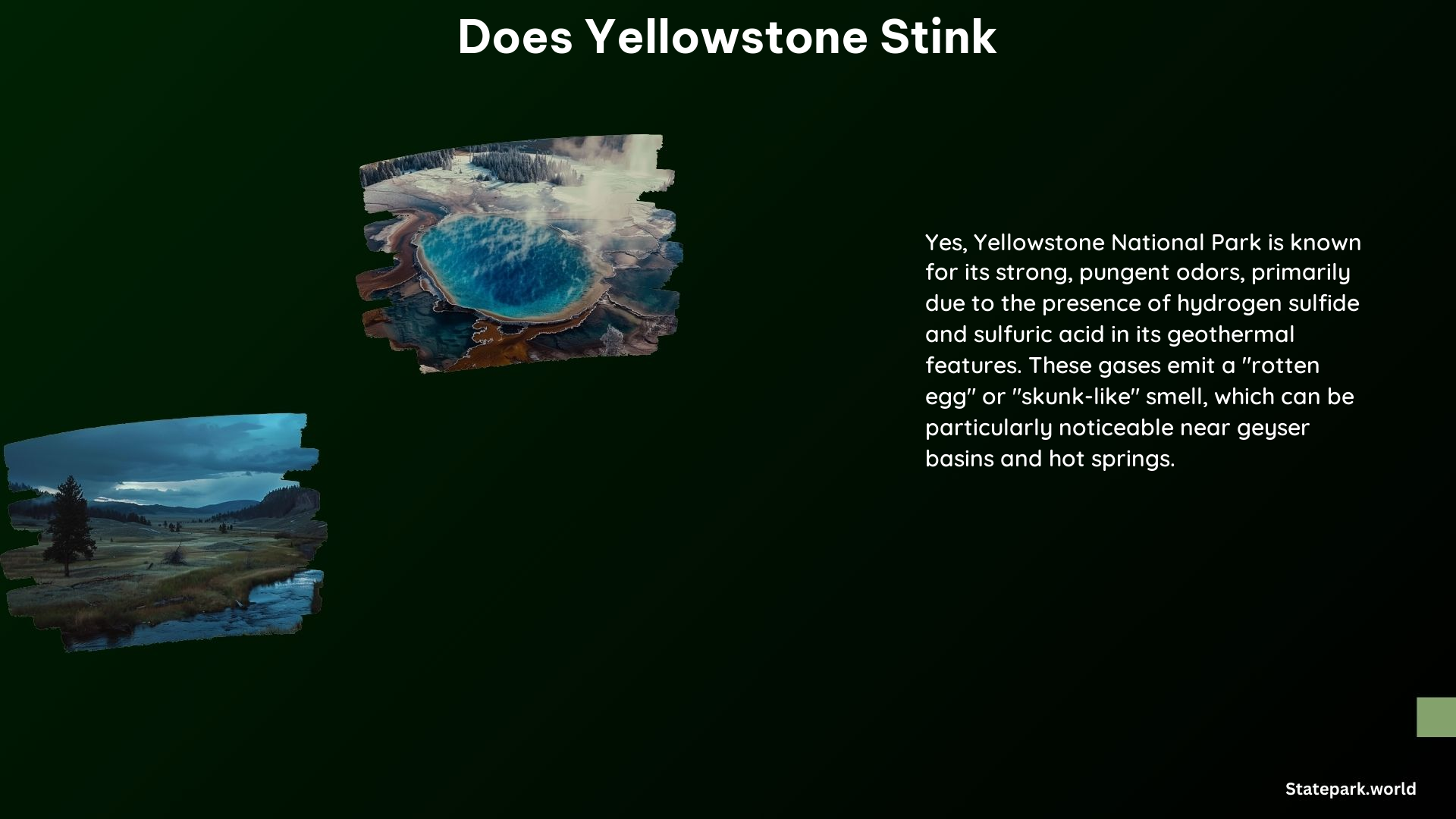Yes, Yellowstone National Park is known for its strong, unpleasant odors, particularly around its geothermal features such as hot springs and mudpots. The primary cause of these odors is the presence of hydrogen sulfide gas, which is released from these geothermal areas. Hydrogen sulfide is responsible for the characteristic “rotten egg” smell that many visitors to the park have reported.
Causes of the Smell
Hydrogen Sulfide Gas
The main culprit behind the unpleasant smell is hydrogen sulfide gas, which is produced by the interaction of sulfur-rich minerals with water in the park’s geothermal systems. This gas is released into the air, creating the strong, pungent odor reminiscent of rotten eggs.
Sulfuric Acid
Elevated levels of sulfuric acid in the geysers also contribute to the smell, which is often described as “skunk-like” or similar to the “Smell of Hell”.
Why the Smell is So Offensive

Copper in Human Sensory Systems
Research suggests that humans are highly sensitive to sulfuric odors due to the presence of copper in our sensory systems. This sensitivity allows us to detect even faint traces of sulfur, making the smell particularly unpleasant.
Notable Geysers and Their Characteristics
| Geyser | Description |
|---|---|
| Old Faithful | Erupts every 60-90 minutes, easy to reach, and a popular tourist attraction. |
| Steamboat Geyser | Located in Norris Geyser Basin, it is the world’s tallest geyser, with eruptions reaching up to 300 feet. |
| Castle Geyser | Located in the Upper Geyser Basin, it erupts every 10-12 hours, reaching heights of up to 90 feet. |
Visiting Yellowstone
Tours and Information
For more information about Yellowstone National Park and available tours, visit www.brushbucktours.com or contact 307-200-2355.
Yellowstone National Park is a breathtaking natural wonder, but its geothermal features come with a price – a strong, unpleasant odor that can be off-putting for some visitors. The primary cause of this smell is the release of hydrogen sulfide gas from the park’s hot springs and mudpots, which is further exacerbated by the presence of sulfuric acid. While the smell may be unpleasant, it is a testament to the incredible geological processes that shape this unique landscape.
Despite the smell, Yellowstone remains a popular destination for nature enthusiasts and outdoor adventurers. From the iconic Old Faithful geyser to the towering Steamboat Geyser, the park offers a wealth of natural wonders to explore. Visitors can also learn more about the science behind the park’s geothermal features and the role they play in shaping the ecosystem.
If you’re planning a visit to Yellowstone, be prepared for the occasional whiff of rotten eggs. But don’t let that deter you – the park’s stunning landscapes, diverse wildlife, and rich history make it a truly unforgettable experience.
References:
- https://www.usgs.gov/observatories/yvo/news/are-yellowstones-gases-dangerous
- https://gizmodo.com/the-real-reason-you-hate-the-smell-of-sulfur-5882859
- https://www.tripadvisor.com/ShowTopic-g60999-i481-k6763832-Is_the_smell_bad_at_Yellowstone-Yellowstone_National_Park_Wyoming.html
- https://brushbucktours.com/blog/why-the-yellowstone-geysers-smell/
- https://www.wired.com/2013/10/dave-reichert-yellowstone-thermal-pools/
